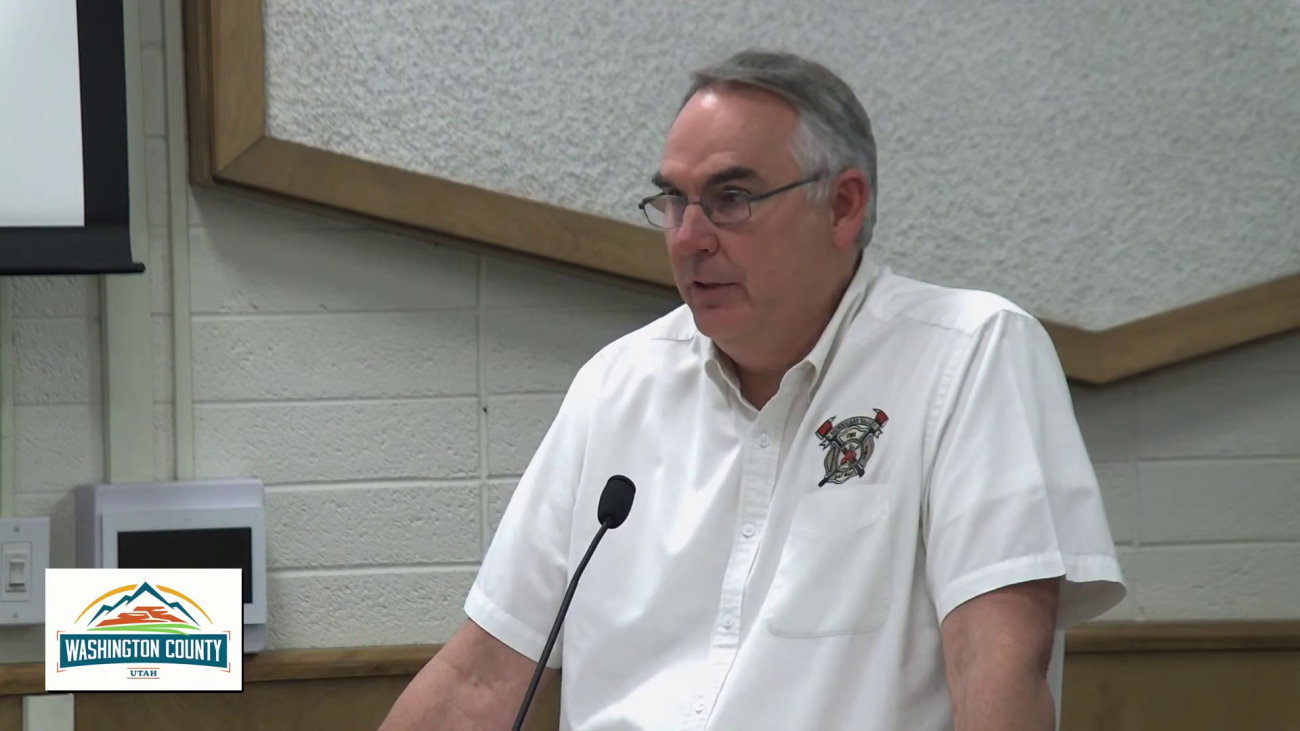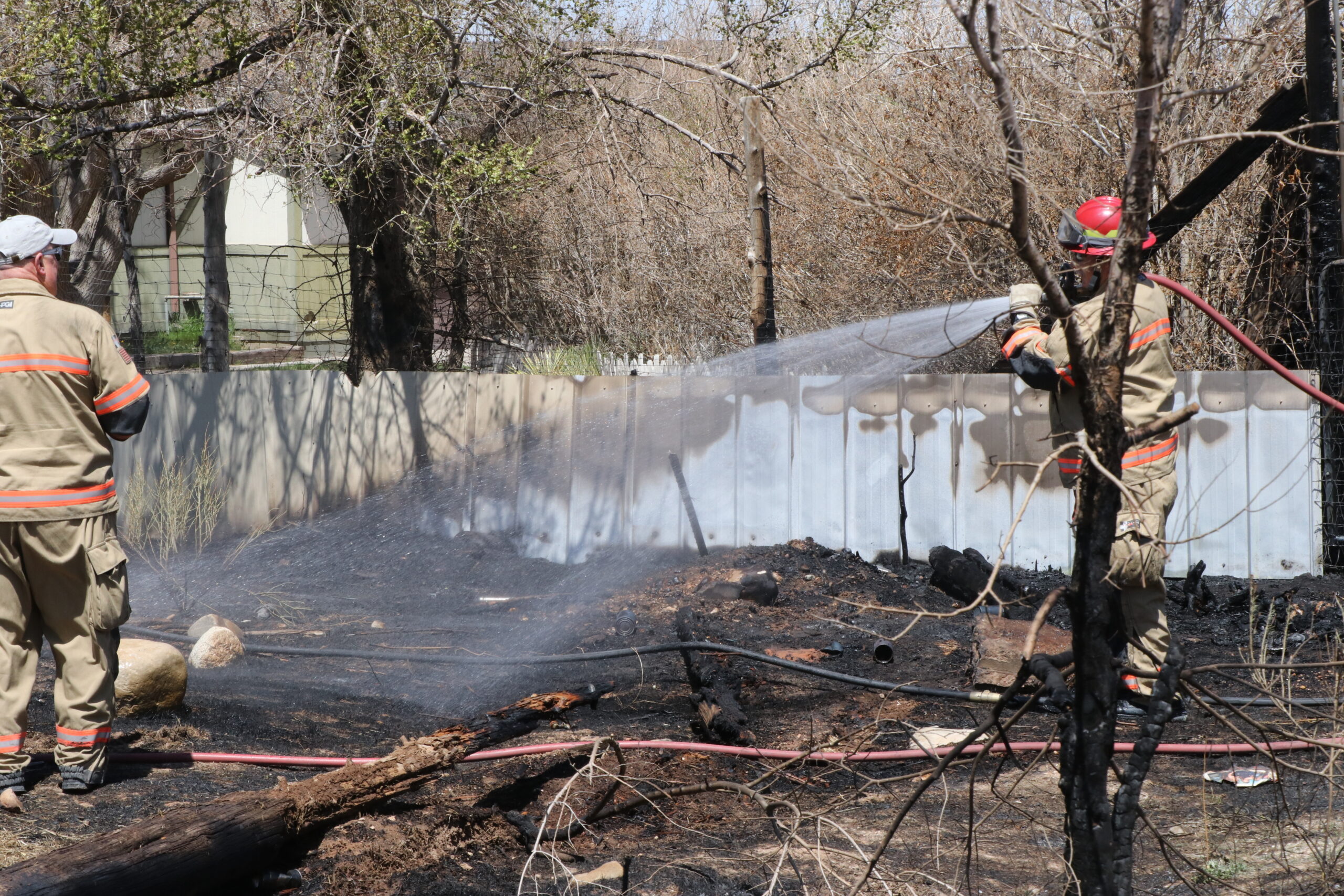ST. GEORGE — State and local fire officials are saying the annual fire season may as well be the “fire year,” with brush fires occurring outside of the usual season window and dangerous fire conditions that are usually not seen until the summer months already in play.

“We’re in a county that is very dry and very brittle,” Hurricane Valley Fire Chief Tom Kuhlmann said during a Washington County Commission meeting Tuesday.
Kuhlmann said he and other area fire chiefs used to talk about the “oncoming fire season” this time of year, but with more fires igniting in the winter and spring, the fire season may as well run from Jan. 1 to Dec. 31.
“We’re in several years of drought, and each year will compound on the year before, so we see each year get worse and worse,” Kuhlmann said. “We’ve seen fire season expand to 365 days for several years now. It stretches throughout the year because of how dry we are.”
The fire chief mentioned recent brush fires the occurred in the region in December and at the start of the year, which usually don’t happen until much warmer temperatures roll in. Another issue is that more people are heading into the outdoors as a part of their recreational retreats. While this has triggered an increase in search and rescue incidents, it also carries a threat of more human-caused fires given the sheer amount of dry fuels.
“If people have to go recreate, we ask that they consider their actions and avoid potential wildfire events,” Kuhlmann said.

Mike Melton, of the Utah Division of Forestry, Fire and State Lands, told St. George News on Thursday that southwest Utah is seeing red flag fire conditions in April that usually don’t appear until the summer.
Due to the extreme dryness bought on by the continuing drought and a rather dry winter, the area is already seeing sizable fires, such as the recent Choke Cherry Fire in Iron County that torched an estimated 660 acres.
“That fire burnt like it was mid-July,” Melton said, adding that the vegetation in higher elevations – which usually takes longer to dry out – is already dried and at a high risk for becoming fire fuel.
“That is a bad sign,” he said. “Everything is drying out very fast.”
Due to the increasing severity of the ever-expanding fire season, the Utah state forester will be starting the closed fire season a month early. Starting May 1 and running through the end of October, no residential debris burns will be permitted in the unincorporated parts of the state unless otherwise approved by local and state officials. The origin of the Choke Cherry Fire itself was a permitted burn that wasn’t completely extinguished and was reignited by winds that fanned smoldering ash piles.
“We’re doing to ratchet down on the burning quite a bit,” Melton said.

Other activities, such as the outdoor grinding or cutting of metal at a construction site, will also need to be approved and a waiver granted by local and state authorities, Melton said. However, the waiver does not absolve the company of any liability if their construction activities spark a fire.
Melton pointed to a small fire that occurred in Cedar City on Wednesday as a reason for construction companies to be mindful of potential fire-causing activities.
A construction crew in the process of cutting rebar shot sparks onto an adjacent property where the dry vegetation was ignited, and a small fire began to spread before being put out by responding firefighters.
“We really need people to stop looking at the calendar and pay attention to the fire conditions,” Melton said. “We need everybody to pay extreme attention to what they are doing.”
According to UtahFireInfo.gov, which Melton recommends the public visit for additional fire information, Washington County has seen nine wildfires so far in 2021 that have burned approximately 100 acres, while Iron County has seen 13 wildfires that have burned nearly 700 acres. Thus far, every fire in both counties has been human caused.
An extensive list of fire prevention tips previously complied by St. George News can be found here.
Copyright St. George News, SaintGeorgeUtah.com LLC, 2021, all rights reserved.